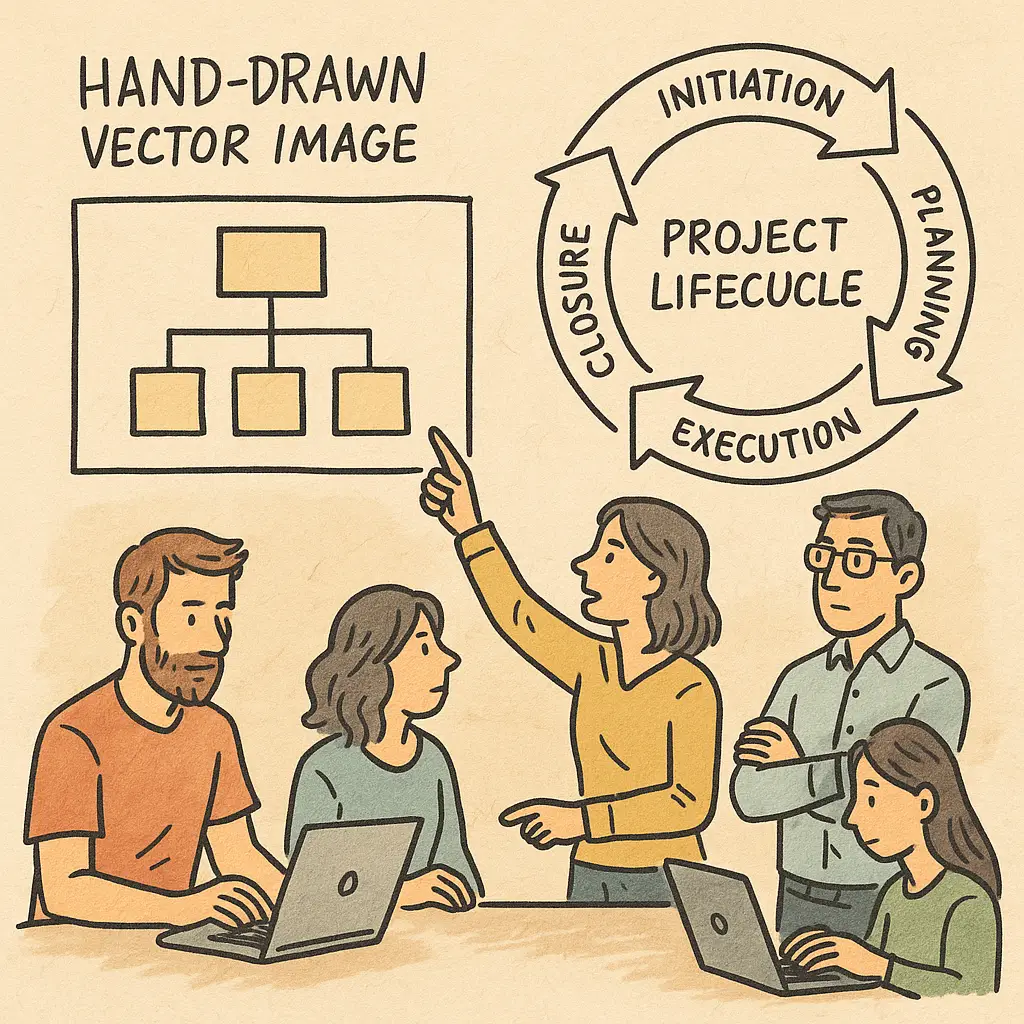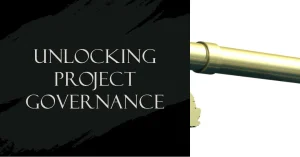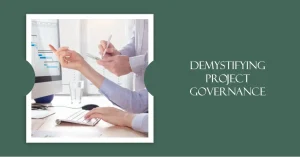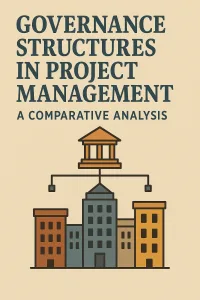Introduction to Governance in Project Management
Governance serves as a critical framework that guides the decision-making processes, establishes accountability, and ensures that projects align with organizational objectives. Understanding and implementing effective governance is essential for project managers and PMO directors who aim to enhance project success rates and deliver value to stakeholders.
Defining Project Governance
Project governance refers to the structured framework that outlines the roles, responsibilities, and processes necessary for making decisions throughout the project lifecycle. It encompasses the policies, procedures, and standards that govern project execution, ensuring that projects are managed effectively and efficiently. Key components of project governance include:
- Decision-Making Authority: Clearly defined roles and responsibilities help in establishing who has the authority to make decisions at various stages of the project.
- Stakeholder Engagement: Governance frameworks facilitate communication and collaboration among stakeholders, ensuring their interests and concerns are addressed.
- Performance Monitoring: Regular assessments and reviews are integral to governance, allowing for the tracking of project progress against established goals and objectives.
The Importance of Governance in Mitigating Risks and Ensuring Accountability
Effective governance plays a pivotal role in risk management and accountability within projects. By establishing clear guidelines and processes, governance helps to:
- Identify and Mitigate Risks: A robust governance framework enables project teams to identify potential risks early in the project lifecycle. This proactive approach allows for the development of mitigation strategies, reducing the likelihood of project failure.
- Enhance Accountability: Governance structures promote accountability by defining roles and responsibilities. When team members understand their obligations and the expectations placed upon them, it fosters a culture of responsibility and ownership.
- Ensure Compliance: Governance ensures that projects adhere to regulatory requirements and organizational policies, minimizing the risk of legal issues and enhancing the project’s credibility.
Integrating Governance Throughout the Project Lifecycle
Integrating governance into every phase of the project lifecycle is essential for maximizing its effectiveness. This integration involves:
- Initiation Phase: Establishing governance structures at the outset ensures that all stakeholders are aligned on project objectives and decision-making processes.
- Planning Phase: Incorporating governance into project planning involves defining roles, responsibilities, and communication protocols, which sets the stage for effective execution.
- Execution Phase: During execution, governance frameworks facilitate ongoing monitoring and control, allowing for timely adjustments and interventions as needed.
- Closure Phase: Governance plays a crucial role in project closure by ensuring that all deliverables meet quality standards and that lessons learned are documented for future projects.
By embedding governance throughout the project lifecycle, project managers can enhance decision-making, improve stakeholder engagement, and ultimately drive project success. This comprehensive approach not only mitigates risks but also fosters a culture of accountability and continuous improvement within the organization.
Understanding the Project Lifecycle
In project management, the project lifecycle serves as a framework that guides the planning, execution, and completion of projects. Understanding the typical phases of the project lifecycle is essential for project managers and PMO directors to effectively integrate governance practices. The project lifecycle generally consists of five key phases: Initiation, Planning, Execution, Monitoring, and Closing. Each phase presents unique challenges and opportunities for governance, which can be tailored to fit the specific needs of the project.
Typical Phases of the Project Lifecycle
- Initiation:
- This phase involves defining the project at a high level, establishing its feasibility, and obtaining authorization to proceed. Key activities include identifying stakeholders, defining project objectives, and developing a project charter.
- Governance Integration: Establish a governance framework that outlines roles, responsibilities, and decision-making processes. This ensures that all stakeholders are aligned and that there is a clear understanding of project objectives from the outset.
- Planning:
- During the planning phase, detailed project plans are developed, including scope, schedule, budget, and resource allocation. This phase is critical for setting the foundation for successful project execution.
- Governance Integration: Implement governance practices such as risk management strategies, quality assurance processes, and stakeholder engagement plans. Tailoring governance to the complexity of the project ensures that all potential risks are identified and managed effectively.
- Execution:
- The execution phase involves carrying out the project plan, coordinating resources, and managing stakeholder expectations. This is where the project team works to deliver the project outputs.
- Governance Integration: Establish regular governance meetings and reporting mechanisms to monitor progress and address any issues that arise. This phase may require more frequent adjustments to governance practices based on real-time project dynamics.
- Monitoring:
- Monitoring is an ongoing process that occurs concurrently with execution. It involves tracking project performance against the plan, identifying variances, and implementing corrective actions as needed.
- Governance Integration: Utilize performance metrics and dashboards to provide visibility into project health. Governance should include mechanisms for escalation and decision-making to address any deviations from the plan promptly.
- Closing:
- The closing phase marks the completion of the project, where deliverables are finalized, stakeholders are informed, and project documentation is completed. This phase also includes a review of project performance and lessons learned.
- Governance Integration: Conduct a formal project closure review to assess governance effectiveness and gather insights for future projects. This reflection helps in refining governance practices for subsequent projects.
Tailoring Governance to Project Size and Complexity
It is crucial to adapt governance practices to the size and complexity of the project. Smaller projects may require less formal governance structures, while larger, more complex projects necessitate robust governance frameworks to manage multiple stakeholders, risks, and compliance requirements.
- For Small Projects: Simplified governance processes can be implemented, focusing on essential documentation and communication channels. This allows for agility and quicker decision-making.
- For Large Projects: A comprehensive governance structure should be established, including detailed reporting, stakeholder engagement strategies, and risk management protocols. This ensures that all aspects of the project are monitored and controlled effectively.
By understanding the project lifecycle and integrating tailored governance practices at each phase, project managers and PMO directors can enhance project success and ensure alignment with organizational objectives.
Step 1: Establish Governance Structure
Integrating a robust governance structure is essential for the successful management of projects. It provides a framework that ensures accountability, transparency, and effective decision-making throughout the project lifecycle. Here’s how project managers can establish a governance structure tailored to their specific projects.
Identify Key Governance Roles and Responsibilities
- Project Sponsor: The project sponsor is a critical role, typically a senior executive who champions the project, secures funding, and provides strategic direction. They are responsible for ensuring that the project aligns with organizational goals and objectives.
- Steering Committee: This group consists of stakeholders who provide oversight and guidance. They are responsible for making high-level decisions, resolving conflicts, and ensuring that the project remains on track. The committee should include representatives from various departments affected by the project to ensure diverse perspectives.
- Project Manager: The project manager is responsible for day-to-day operations, including planning, execution, and monitoring. They report to the project sponsor and the steering committee, ensuring that all governance requirements are met.
- Project Team Members: Each team member should understand their roles within the governance framework, including reporting structures and accountability for their tasks.
Importance of Defining Decision-Making Processes and Authority Levels
Establishing clear decision-making processes is vital for effective governance. This includes:
- Authority Levels: Define who has the authority to make decisions at various stages of the project. For instance, minor changes may be approved by the project manager, while significant changes may require steering committee approval. This clarity helps prevent bottlenecks and ensures timely decision-making.
- Escalation Procedures: Outline how issues should be escalated within the governance structure. This ensures that problems are addressed promptly and at the appropriate level, maintaining project momentum.
- Documentation: Maintain records of decisions made, including the rationale behind them. This documentation is crucial for accountability and can serve as a reference for future projects.
Examples of Governance Structures Suitable for Various Project Types
- Traditional Waterfall Projects: In a waterfall project, a hierarchical governance structure is often effective. The project sponsor sits at the top, followed by the steering committee, project manager, and team members. This structure supports clear lines of authority and decision-making.
- Agile Projects: Agile projects may benefit from a more flexible governance structure. Here, roles such as the Product Owner and Scrum Master are critical. The governance framework should allow for rapid decision-making and adaptability, with regular reviews and feedback loops integrated into the process.
- Complex Projects: For large, complex projects, a matrix governance structure may be appropriate. This involves multiple stakeholders from different departments, allowing for shared decision-making and resource allocation. It encourages collaboration and ensures that all relevant expertise is considered in the decision-making process.
By establishing a clear governance structure, project managers can enhance accountability, streamline decision-making, and ultimately increase the likelihood of project success. This foundational step sets the stage for effective governance throughout the project lifecycle, ensuring that projects are delivered on time, within scope, and aligned with organizational objectives.
Step 2: Define Governance Policies and Procedures
Incorporating governance into the project lifecycle is essential for ensuring that projects are executed effectively and align with organizational objectives. A critical aspect of this integration is the establishment of clear governance policies and procedures. This section outlines the types of governance policies that should be established, discusses how to document and communicate these policies, and provides examples of successful governance policies from real projects.
Types of Governance Policies to Establish
- Risk Management Policies:
- Define how risks will be identified, assessed, and managed throughout the project lifecycle.
- Establish thresholds for risk tolerance and outline the processes for escalating risks to higher management levels.
- Stakeholder Engagement Policies:
- Specify how stakeholders will be identified, analyzed, and engaged.
- Outline communication strategies to ensure stakeholders are informed and involved in decision-making processes.
- Change Management Policies:
- Detail the procedures for managing changes to project scope, schedule, and budget.
- Include guidelines for assessing the impact of changes and obtaining necessary approvals.
- Quality Assurance Policies:
- Define the standards and metrics for quality that the project must meet.
- Establish processes for quality reviews and audits to ensure compliance with these standards.
- Compliance and Regulatory Policies:
- Identify relevant laws, regulations, and standards that the project must adhere to.
- Outline procedures for ensuring compliance and reporting on regulatory matters.
Documenting and Communicating Governance Policies
To ensure that governance policies are effectively implemented, it is crucial to document and communicate them clearly:
- Documentation:
- Create a governance framework document that outlines all policies and procedures. This document should be easily accessible to all project team members and stakeholders.
- Use templates and checklists to standardize documentation, making it easier for team members to follow established procedures.
- Communication:
- Conduct training sessions and workshops to educate the project team and stakeholders about the governance policies.
- Utilize project management tools and platforms to share updates and reminders about governance policies, ensuring that everyone is aware of their responsibilities.
- Feedback Mechanisms:
- Establish channels for team members and stakeholders to provide feedback on governance policies. This can help identify areas for improvement and ensure that policies remain relevant and effective.
Examples of Successful Governance Policies
- NASA’s Project Management Policy:
- NASA has established comprehensive governance policies that include rigorous risk management and stakeholder engagement processes. Their policies emphasize transparency and accountability, which have been critical in managing complex projects like the Mars Rover missions.
- The UK Government’s Major Projects Authority (MPA):
- The MPA has developed a set of governance frameworks that guide the management of major public sector projects. Their policies focus on stakeholder engagement and compliance with regulatory standards, ensuring that projects deliver value for money and meet public expectations.
- Agile Governance in Software Development:
- Many software development projects have successfully integrated governance policies that align with Agile methodologies. For instance, companies like Spotify have implemented governance frameworks that promote flexibility while ensuring that risk management and quality assurance are maintained throughout the development process.
By defining clear governance policies and procedures, project managers can create a structured environment that supports effective decision-making, enhances stakeholder engagement, and ultimately leads to project success. This step is vital in embedding governance throughout the project lifecycle, ensuring that projects are not only completed on time and within budget but also deliver the intended value to the organization.
Step 3: Implement Governance Tools and Techniques
Integrating governance into the project lifecycle is essential for ensuring that projects are executed effectively, meet stakeholder expectations, and align with organizational objectives. In this section, we will explore practical tools and techniques that can facilitate governance throughout the project lifecycle, providing project managers and PMO directors with actionable insights.
Project Management Software
Utilizing project management software is a foundational step in embedding governance into your projects. These tools not only streamline project planning and execution but also enhance visibility and accountability. Here are some key features to look for:
- Task Management: Software like Asana, Trello, or Microsoft Project allows for clear task assignments and tracking, ensuring that everyone knows their responsibilities and deadlines.
- Document Management: Tools such as SharePoint or Google Drive facilitate centralized document storage, making it easier to manage project documentation and ensure compliance with governance standards.
- Collaboration Features: Platforms like Slack or Microsoft Teams enhance communication among team members, which is crucial for maintaining transparency and addressing issues promptly.
By leveraging these software solutions, project managers can create a structured environment that supports governance principles, ensuring that all project activities are aligned with organizational policies and stakeholder expectations.
Techniques for Effective Governance
In addition to software, several techniques can be employed to enhance governance throughout the project lifecycle:
- Stakeholder Mapping: This technique involves identifying all stakeholders involved in the project and understanding their interests, influence, and impact. By mapping stakeholders, project managers can tailor communication strategies and engagement plans, ensuring that all voices are heard and considered in decision-making processes.
- Risk Assessment Matrices: A risk assessment matrix is a tool that helps project teams identify, analyze, and prioritize risks based on their likelihood and impact. By regularly updating this matrix, project managers can proactively address potential issues, ensuring that governance frameworks are responsive to changing project dynamics.
- Performance Dashboards: Implementing performance dashboards allows project managers to visualize key performance indicators (KPIs) and project metrics in real-time. These dashboards can provide insights into project health, resource allocation, and adherence to timelines, enabling informed decision-making and timely interventions when necessary.
Integrating Tools into Daily Practices
To effectively integrate these tools and techniques into daily project management practices, consider the following steps:
- Training and Onboarding: Ensure that all team members are trained on the governance tools and techniques being implemented. This can include workshops, tutorials, or hands-on sessions to familiarize them with the software and methodologies.
- Regular Check-ins: Schedule regular meetings to review stakeholder feedback, risk assessments, and performance metrics. This not only reinforces the importance of governance but also encourages a culture of accountability and continuous improvement.
- Documentation and Reporting: Establish a routine for documenting governance-related activities and decisions. This can include maintaining a governance log that tracks stakeholder interactions, risk management actions, and performance reviews, ensuring that there is a clear record of governance efforts throughout the project lifecycle.
- Feedback Loops: Create mechanisms for gathering feedback on the effectiveness of governance tools and techniques. This can help identify areas for improvement and ensure that governance practices evolve alongside project needs.
By implementing these governance tools and techniques, project managers can create a robust framework that supports effective project execution, enhances stakeholder engagement, and aligns project outcomes with organizational goals. This proactive approach to governance not only mitigates risks but also fosters a culture of transparency and accountability within project teams.
Step 4: Monitor and Evaluate Governance Effectiveness
Embedding governance throughout the project lifecycle is crucial for ensuring that projects are executed efficiently, transparently, and in alignment with organizational objectives. Step 4 focuses on the continuous monitoring and evaluation of governance practices, which is essential for maintaining their effectiveness and relevance. Here are the key points to consider:
Metrics and KPIs to Assess Governance Effectiveness
To effectively monitor governance practices, it is vital to establish clear metrics and Key Performance Indicators (KPIs). These tools help project managers and PMO directors quantify the success of governance frameworks. Consider the following metrics:
- Compliance Rate: Measure the percentage of project activities that adhere to established governance policies and procedures. A high compliance rate indicates effective governance.
- Stakeholder Satisfaction: Use surveys or feedback forms to gauge stakeholder perceptions of governance processes. High satisfaction levels can reflect the effectiveness of communication and decision-making frameworks.
- Risk Management Effectiveness: Track the number of identified risks versus the number of risks mitigated or resolved. This metric helps assess how well governance practices support risk management.
- Project Delivery Timeliness: Evaluate whether projects are delivered on time and within budget. Delays or budget overruns may signal governance issues that need addressing.
Importance of Regular Reviews and Audits
Regular reviews and audits of governance processes are critical for ensuring that they remain effective and aligned with project goals. These evaluations should be conducted at key milestones throughout the project lifecycle. Here’s why they are important:
- Identifying Gaps: Regular audits can uncover gaps in governance practices, allowing for timely interventions. This proactive approach helps prevent issues from escalating.
- Ensuring Compliance: Reviews help ensure that all team members are adhering to governance policies, which is essential for maintaining project integrity and accountability.
- Enhancing Transparency: Conducting regular evaluations fosters a culture of transparency, where stakeholders are kept informed about governance practices and their effectiveness.
Strategies for Adapting Governance Practices
Based on the findings from monitoring and evaluation activities, it is essential to adapt governance practices to enhance their effectiveness. Here are some strategies to consider:
- Feedback Loops: Establish mechanisms for collecting feedback from project teams and stakeholders. Use this information to refine governance processes and address any identified shortcomings.
- Training and Development: Invest in training programs to ensure that all team members understand governance practices and their importance. Continuous education can help improve compliance and engagement.
- Agile Governance: Adopt an agile approach to governance, allowing for flexibility and responsiveness to changing project needs. This may involve revising governance frameworks based on lessons learned from previous projects or current evaluations.
By implementing these strategies, project managers and PMO directors can ensure that governance practices are not only effective but also adaptable to project management. Continuous monitoring and evaluation are not just best practices; they are essential components of a robust governance framework that supports successful project outcomes.
Step 5: Foster a Governance Culture
Integrating governance into the project lifecycle is not just about processes and frameworks; it is equally about cultivating an organizational culture that supports these initiatives. A strong governance culture can significantly enhance the effectiveness of governance practices, ensuring that they are not merely theoretical but are actively embraced by all stakeholders involved in project management. Here are some practical steps to foster a governance culture within your organization:
Importance of Leadership Support
- Visible Commitment: Leadership plays a crucial role in establishing a governance culture. When leaders actively support governance initiatives, it sends a clear message to the entire organization about the importance of these practices. This commitment can be demonstrated through regular communication about governance goals and expectations, as well as by participating in governance-related activities themselves.
- Resource Allocation: Leaders must ensure that adequate resources—both human and financial—are allocated to governance initiatives. This includes investing in training programs that equip project managers and teams with the necessary skills to understand and implement governance effectively.
- Modeling Behavior: Leaders should model the behaviors they wish to see in their teams. By demonstrating accountability, transparency, and ethical decision-making, leaders can inspire similar behaviors throughout the organization.
Promoting Accountability and Transparency
- Establish Clear Roles and Responsibilities: Clearly defined roles and responsibilities help to create a sense of ownership among team members. When everyone understands their specific contributions to governance, it fosters accountability. Use RACI (Responsible, Accountable, Consulted, Informed) charts to clarify these roles.
- Encourage Open Communication: Create an environment where team members feel comfortable discussing challenges and raising concerns. Regular check-ins and feedback sessions can facilitate open dialogue, allowing for transparency in decision-making processes.
- Implement Performance Metrics: Develop and share key performance indicators (KPIs) related to governance. By tracking and reporting on these metrics, teams can see the direct impact of their governance efforts, reinforcing the importance of accountability and transparency.
- Recognize and Reward Good Practices: Acknowledge and reward teams and individuals who exemplify strong governance practices. This recognition can motivate others to adopt similar behaviors and contribute to a culture of accountability.
Fostering a governance culture is essential for the successful integration of governance into the project lifecycle. By securing leadership support, promoting accountability and transparency, and learning from successful organizations, project managers and PMO directors can create an environment where governance is not just a set of rules but a fundamental aspect of how projects are managed. This cultural shift will ultimately lead to more successful project outcomes and a stronger alignment with organizational goals.
Conclusion: The Path Forward for Project Managers
In the dynamic field of project management, integrating governance throughout the project lifecycle is not just beneficial; it is essential for ensuring project success. As we conclude this guide, let’s revisit the key takeaways and emphasize the importance of embedding governance practices in your projects.
- Importance of Governance: Effective governance serves as the backbone of successful project management. It provides a structured framework that enhances decision-making, accountability, and transparency. By establishing clear roles, responsibilities, and processes, governance helps mitigate risks and aligns project objectives with organizational goals. This alignment is crucial for delivering projects on time and within budget, ultimately leading to higher stakeholder satisfaction.
- Proactive Approach to Governance: Project managers are encouraged to adopt a proactive stance towards governance. This means not only implementing governance frameworks at the outset of a project but also continuously monitoring and adapting these practices as the project evolves. Engaging stakeholders early and often, fostering open communication, and being responsive to feedback are vital components of a proactive governance strategy. By doing so, project managers can anticipate challenges and make informed decisions that drive project success.
- Resources for Further Reading and Professional Development: To deepen your understanding of project governance and enhance your skills, consider exploring the following resources:
- Books: Look for titles focused on project governance frameworks, risk management, and stakeholder engagement.
- Online Courses: Platforms like Coursera and LinkedIn Learning offer courses on project management best practices, including governance.
- Professional Organizations: Joining organizations such as the Project Management Institute (PMI) can provide access to valuable resources, networking opportunities, and certifications that emphasize governance in project management.
By embracing these practices and resources, project managers can not only improve their project outcomes but also contribute to the overall maturity of their organization’s project management capabilities. The path forward is clear: prioritize governance, engage stakeholders, and commit to continuous learning. This approach will not only enhance your projects but also position you as a leader in the field of project management.
Find out more about Shaun Stoltz https://www.shaunstoltz.com/about/.
This post was written by an AI and reviewed/edited by a human.



